How disaster prevention education can help lead to recovery
The Great East Japan Earthquake, which caused tremendous damage in the Tohoku region of Japan, increased public awareness for disaster prevention as well as highlighted the importance of disaster preparedness and knowledge in disaster prevention. “Lives were lost because people didn’t know,” says Ikki Kato, who, as a student at Waseda University, set up a student disaster response team called Waseda Rescue and educated people about disaster prevention and actions to take during disasters. Kato also trained Waseda University volunteers before they were dispatched during the Great East Japan Earthquake. We asked him about how Waseda Rescue came about what the team’s activities at the time.
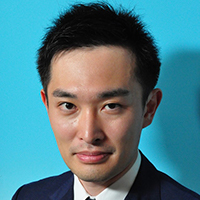
- Ikki KATO
- Technology Researcher
- Ikki Kato graduated from the Department of Civil and Environmental Engineering, School of Creative Science and Engineering, Waseda University in 2009. He completed his master’s degree in 2011 and received his Ph.D. in 2015 from the Graduate School of Creative Science and Engineering. After joining a disaster prevention club while he was a student, he established a student disaster response team called Waseda Rescue in 2007. Kato was responsible for training WAVOC volunteers who assisted recovery after the Great East Japan Earthquake in 2011. When he was a graduate school student, Kato engaged in research activities on liquefaction countermeasures in the waterfront areas of Tokyo Bay. After graduating, he joined Obayashi Corporation, where Kato is currently working at the company’s Technical Research Institute. At the institute, he is involved in research on liquefaction countermeasures for port facilities and experimental work on earthquake-resistant technologies for underground structures and the safety of nuclear power plants.
Saving lives with knowledge on disaster prevention
Kato’s interest in disaster prevention education goes back to 2005. During his first year at the School of Creative Science and Engineering, his senior told him about children who were victims of the tsunami caused by the 2004 Indian Ocean earthquake.
- “This student was a member of WASEND, a Waseda University group that supports disaster prevention education, and was actively involved in teaching elementary school students in Japan and overseas. WASEND was established in the wake of the 2004 Sumatora Offshore Earthquake. I was told that, in that natural disaster, many children were killed by the tsunami because they went to gather the fish that were left ashore on the beach by the backwashNote 1) that occurs before a tsunami hits. To Japanese people, it’s common knowledge that if an earthquake occurs near the coast, we should evacuate to higher ground. I was shocked by the fact that lives were lost because of the lack of such knowledge.
- However, even in Japan, where people are more aware of the precautions to take during disasters, having that knowledge alone doesn’t mean that lives won’t be lost. As I started to realize the magnitude of the responsibility that comes with disaster prevention education, I wanted to contribute by sharing information and knowledge about disaster prevention, leading me to join WASEND in 2005.
- In WASEND, I taught many lessons, starting with school visits aimed at elementary school students in Oita Prefecture. The students seemed to have learned from what I taught them, and I got some sense of accomplishment. However, unlike now, people’s interest in disaster prevention wasn’t as high at that time. In comparison to students sharing their own experiences of the 1995 Kobe Earthquake, some members of our group questioned the significance of their conducting disaster prevention education because they had never experienced disasters brought upon by an earthquake before. It was difficult raising the members’ awareness and organizing their opinions. When I think about it now, the question of whether you have been a victim of disaster yourself is less important than how you felt and what you thought after hearing the stories of survivors. Communicating these feelings creates empathy that leads to action, or in this case, disaster prevention measures.”
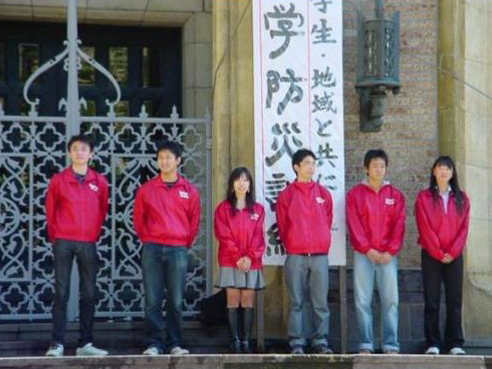
Establishing Waseda Rescue
“I want as many people as possible to take an interest in disaster prevention.” With this in mind, Kato started the student disaster response team Waseda Rescue within the Hirayama Ikuo Volunteer Center (WAVOC) in 2007.
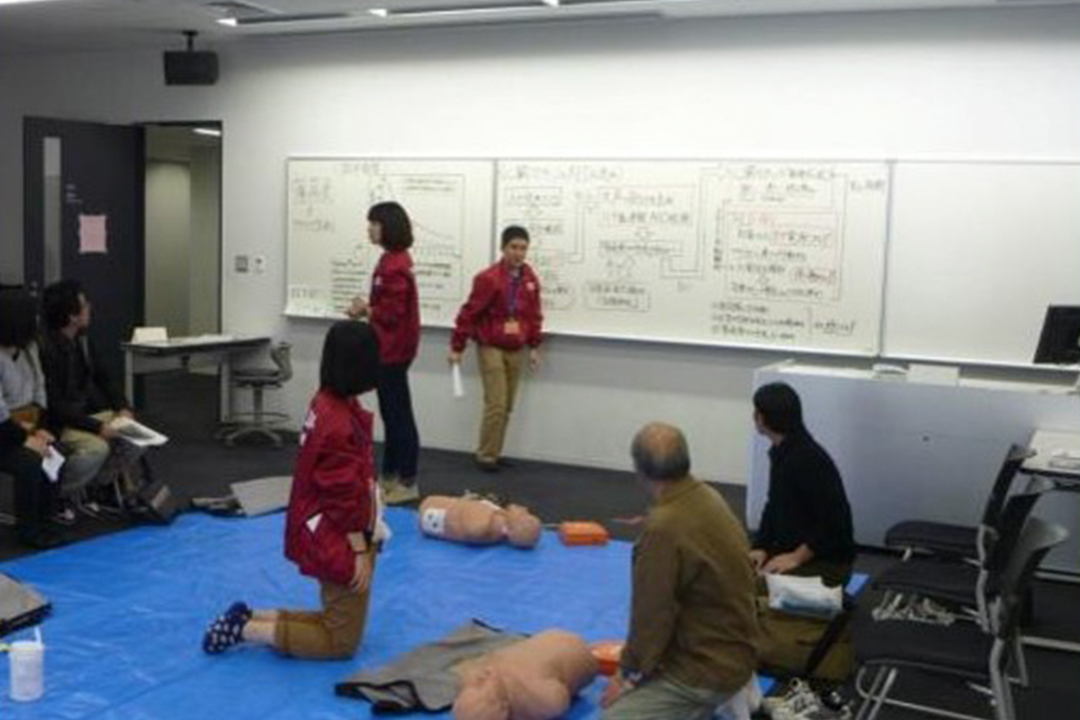
- “While teaching elementary and junior high school students as a WASEND member, I was suddenly struck with the question of what would happen to university students if an earthquake were to hit while we were on campus. Waseda University is designated as a primary evacuation center in the locality, but already having to attend to the needs of students who are unable to get home and so on, the university would have a difficult time managing the center. I thought that there was a need for a group that could support the management aspect of an evacuation center, coordinate with residents even during ordinary times, raise awareness of disaster prevention among students, and consider actions to be taken in case of a disaster. So, I launched the WAVOC-authorized group, Waseda Rescue in 2007.
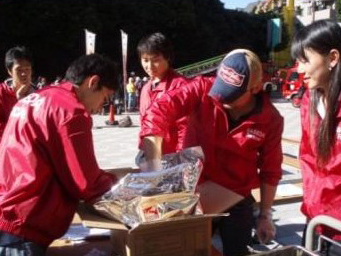
- At that time, WAVOC was recruiting and sending volunteer staff temporarily to areas where a disaster had occurred, but there weren’t any groups that were conducting disaster prevention activities in the Waseda area. This meant that if there was a group that was an expert on disaster prevention and regularly trained student staff at Waseda, then student staff can be sent off prepared in the event of a disaster in a distant place. In that sense, the launch of Waseda Rescue was a big step. Its main activities were cooperating in disaster drills held on campus and checking the emergency supply storehouses, as well as publicity and events involving disaster prevention-related information aimed at university students and local children. I took advanced lifesaving courses and learned skills such as first aid. Eventually, our efforts came to fruition as we recruited members from all departments and gradually gained recognition within the university.”
Sending Waseda students with advanced training to the disaster-stricken areas
Soon after the Great East Japan Earthquake, Waseda University established the Office for Aiding Reconstruction from the Great East Japan Earthquake. It started support activities centered on three pillars: educational aid for students affected by the disaster; recovery aid through research; and aid for regions affected by the disaster. At the same time, WAVOC sent student volunteers and faculty to the disaster-stricken areas. Many students had little volunteering knowledge or experience, but Kato held advanced training sessions. From April to June, approximately 500 students went through this training before they were sent off.
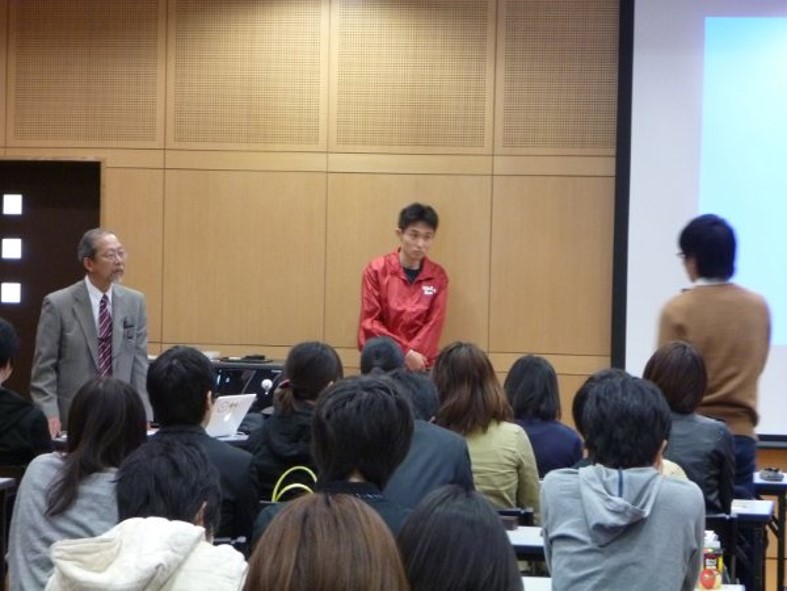
- “Due to the Great East Japan Earthquake, Waseda University’s entrance ceremony was canceled, and the first day of classes was moved to May. Many students wanted to something in the meantime, and there was an urgent need to create a system for sending volunteers. However, because the situation in the disaster-stricken areas was unclear, we discussed the risks of blindly sending student volunteers. As seen in past disasters such as the Kobe Earthquake and the Niigata-Chuetsu Earthquake, people entering disaster-stricken areas can indiscriminately cause problems for the local community.
- Therefore, the first advanced training session was held at the start of April, and students interested in volunteering were provided with information on topics such as risk management in the local area and how to interact with people affected by the disaster. At the time, the university was also cautious about sending volunteers, but, on the condition that they attend these training sessions, WAVOC started sending student volunteers to disaster-stricken areas.
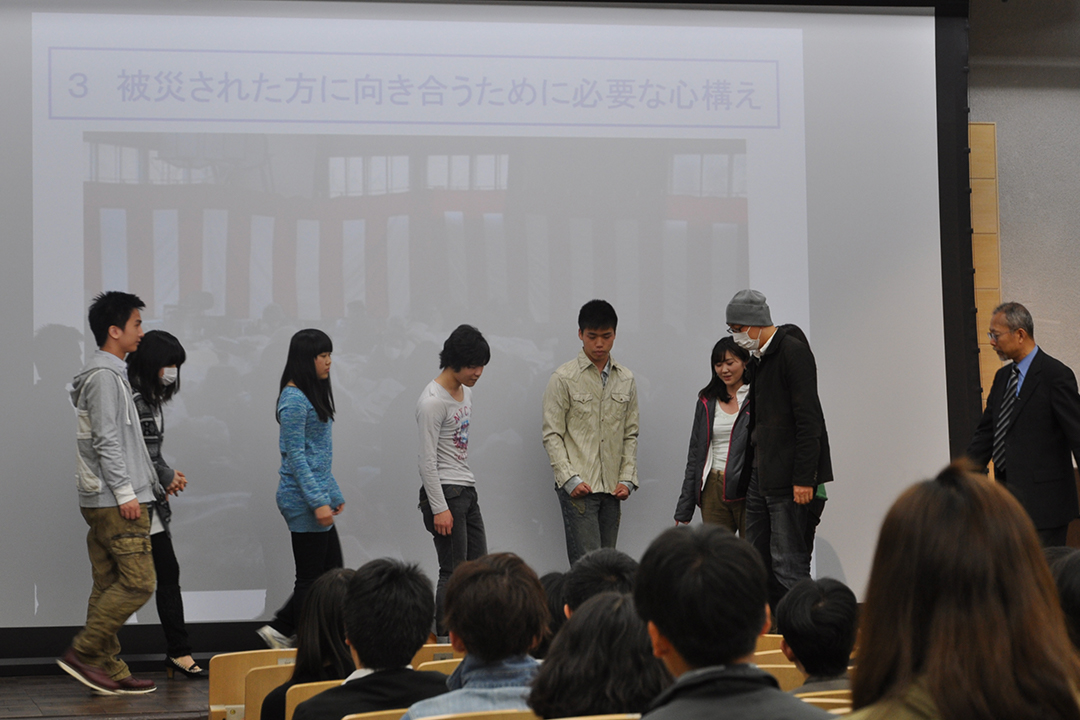
- Through activities by Waseda Rescue, a network of people involved in disaster prevention was established, and the group started to invite experts on the frontline to give lectures at the training sessions, helping to send off more volunteers. I think that Waseda Rescue activities contributed to the deployment of student volunteers and the subsequent creation of various volunteer projects.”
Protecting ordinary life through disaster prevention research
After graduating from the Graduate School of Creative Science and Engineering, Kato joined Obayashi Corporation, a general construction company. He is still involved in disaster prevention research and is currently studying liquefaction countermeasures for port facilities related to national land resilience and earthquake-resistant technologies for power plants including nuclear installations. Regarding his future goals, Kato says the following.
- “I engage in research every day with the question ‘What is the future of what I am researching?’ in my mind. When I was active in Waseda Rescue, I had the opportunity to talk to people forced to live in evacuation shelters in Tokyo due to the accident at the Fukushima Daiichi nuclear power plant. Some people cried as they told me that they didn’t want to use electricity generated from nuclear power, and I realized that the impact of the nuclear power accident is deeply ingrained in the minds of the evacuees and will have a huge influence on the rest of their lives. This kind of realization has made me aware that, in addition to enhancing technology, technology researchers must recognize that there are people with emotions beyond the technology being studied and that the technology could have a significant impact on their lives.
Disaster prevention research is an important job that underpins the ordinary lives of people. Social responsibility is great and not even small mistakes are tolerated because it supports the foundation of our daily lives or industries. My mission as someone engaged in disaster prevention research is to avoid the extraordinary by preventing, as much as possible, disasters that rob people of their ordinary lives. However, only a small portion of problems can be resolved simply by improving earthquake-resistant technologies, which is why I want to use what I learned and experienced at Waseda to contribute, not only through research but also through a variety of initiatives, so that people can live their lives as normal today.”
Note 1: A tsunami may also strike without backwash occurring.




